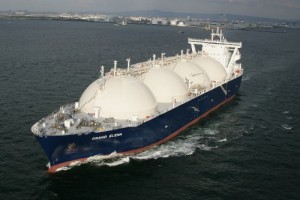Oil demand driven by growth in air travel and vehicle usage
China’s implied oil demand grew 3.5% in June, as rising air travel and vehicle usage boosted fuel consumption, reports Reuters. A drop in passenger car sales amid recent stock market weakness could limit future demand growth, however.
China consumed about 10.56 MMBOPD of oil in June, up from 10.20 MMBOPD from June 2014, and up from 10.32 MMBOPD in May of 2015. Those numbers put China’s implied oil demand in the first half of 2015 up 5.7 % year-on-year at 10.43 MMBOPD, according to preliminary government data and calculations done by Reuters.
The growth may not be sustainable though, with China’s automakers association cutting its 2015 forecast for vehicle sales growth to 3% following a major slump in the Chinese stock market that contributed to a 7.5% one-day decline in WTI prices.
Chinese gas market faces oversupply
In a report released by the Oil Council today, Zarko Arsov, senior associate at Taylor DeJongh, said that the Chinese market could face oversupply in natural gas by 2020, especially if the country manages to achieve large-scale production of its shale gas.
Power generation only 1% natural gas fired
Currently, natural gas accounts for less than 1% of China’s total power output, but this figure is expected to rise substantially as China makes a push towards cleaner burning fuels. China has been rapidly expanding its liquefied natural gas (LNG) regasification infrastructure, acquiring ownership interest in LNG liquefaction projects and securing offtake contracts. In addition to the push for more LNG infrastructure, China has also signed deals with Russia, Turkmenistan and Myanmar for the import of natural gas through pipelines.
These efforts to increase the amount of natural gas imports in addition to the Chinese government’s attempts to develop its own shale industry could lead to more gas than even the rapidly expanding Chinese market can handle. “The potential oversupply could, in fact, be significant if China’s shale gas reserves are as large as expected, and the country is able to fully exploit them,” said Arsov.
Many obstacles stand in the way of a full-fledged shale gas industry in China, however. Technology used in the U.S. may not be suitable for China due to different geography, and drilling costs remain high, at approximately $6.3-$7.8 million per well or higher, making shale uncompetitive with imported gas.
According to Arsov, if China is able to recover its unconventional gas reserves, it could potential meet demand entirely through domestic demand. Even if that is the case, many of the natural gas deals China has already made are long-term contracts, meaning oversupply could happen in the next five years.
“One of the most obvious potential implications of the oversupply is the reduction in China’s pipeline and LNG imports. A substantial portion of China’s future LNG imports is based on long-term contracts; however, China could reduce its participation in the spot market. Even more likely is the reduction of pipeline imports,” says Arsov.
“Another possible implication of the oversupply is for China to re-export natural gas to its neighbors, possibly Japan. Re-export could be an attractive option, as Japanese appetite has caused gas price to exceed those in China by almost 25% over the past few years. China could potentially become a regional supply hub, playing a role similar to that of Russia today.”


